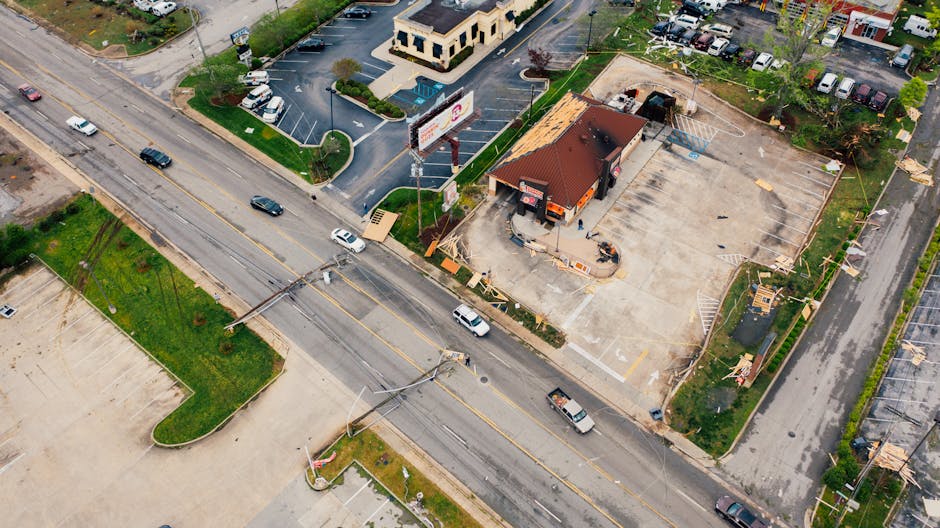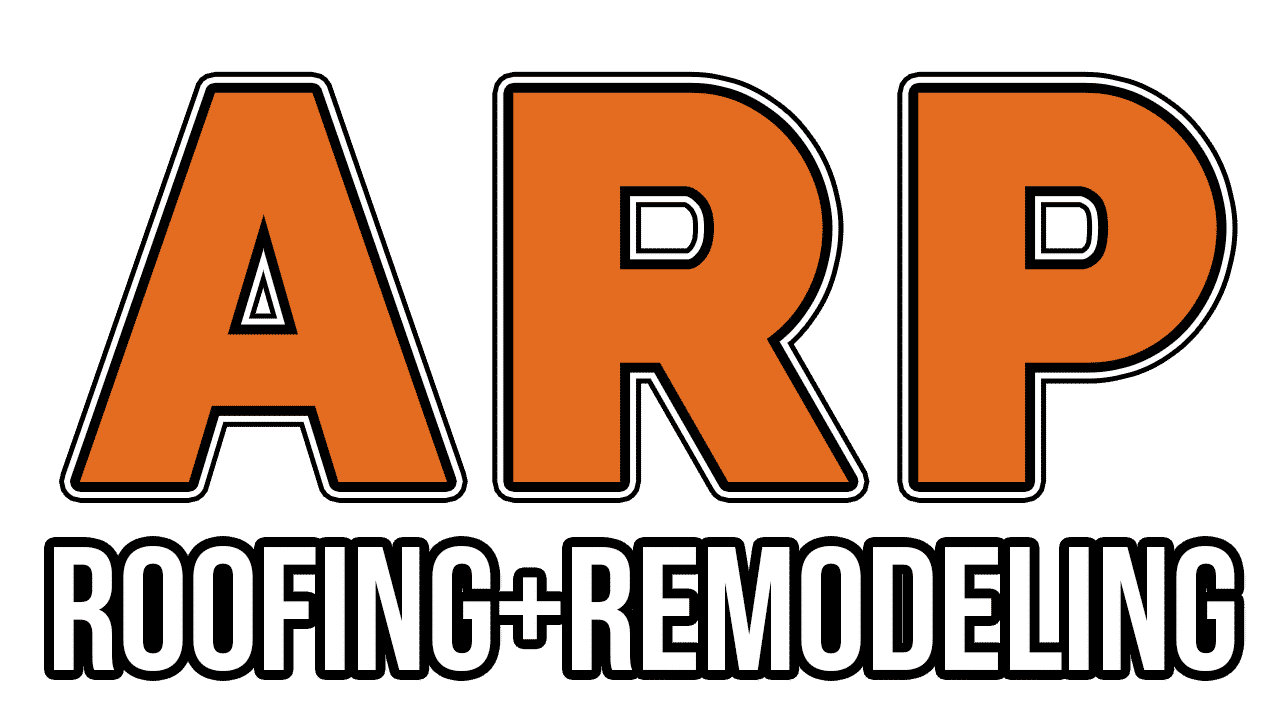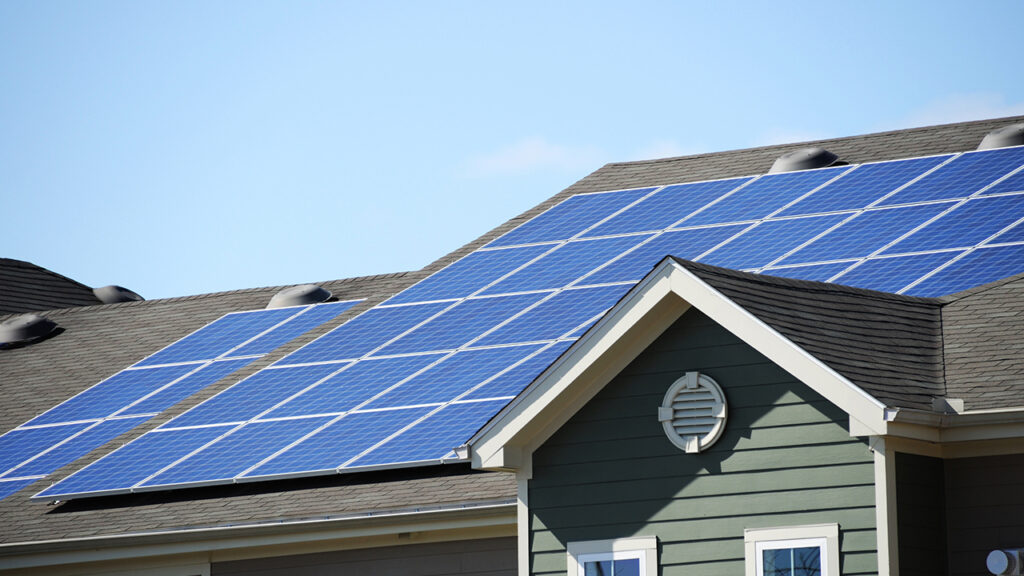
Emergency storm damage repairs are essential to protect your home and family after a severe storm. Whether it’s a hurricane, hail, tornado, or heavy rain, knowing what to do immediately can save you a lot of trouble. Here’s a quick guide for fast action:
- Check for Immediate Hazards: Ensure safety first. Look out for downed power lines, standing water, or gas leaks.
- Document the Damage: Take photos and videos of all affected areas for insurance purposes.
- Temporary Fixes: Implement quick fixes like boarding up broken windows or covering exposed areas to prevent further damage.
- Contact a Licensed Contractor: Hire a professional for a thorough assessment and long-term repairs.
Dealing with storm damage can be overwhelming, but taking these steps helps ease the repair process and protects your home from further harm.
My name is Preston Williams, and with years of experience in emergency storm damage repairs, my team and I at ARP Roofing and Remodeling are dedicated to helping homeowners restore their properties quickly and efficiently.

Assessing the Damage
After a storm, it’s crucial to assess the damage to your home. This helps you understand the extent of the damage and prepare for the necessary repairs. Follow these steps to ensure a thorough and safe assessment.
Safety First
1. Check for Immediate Hazards
Before you start checking your home, ensure it’s safe. Look for hazards like downed power lines, standing water, and broken glass. Always assume downed power lines are live and dangerous. Stay at least 10 feet away and alert the utility company.
2. Avoid Standing Water
Standing water can be dangerous, especially if there are downed power lines nearby. Do not step into standing water without first ensuring the power is turned off. This helps avoid the risk of electrocution.
3. Inspect During Daylight
If possible, avoid inspecting for damage after dark. If you must, use a flashlight instead of candles or open flames to avoid the risk of fire or explosion from a damaged gas line.
4. Watch for Structural Damage
Storms can cause physical hazards such as collapsed roofing materials, window damage, and standing water inside the home. If you smell gas or suspect a leak, shut off the main gas line, open windows, and immediately go outside. Notify the gas company and authorities before returning.
Documenting the Damage
Once you’ve ensured it’s safe, it’s time to document the damage. This is essential for your insurance claims.
1. Take Photos and Videos
Take clear, detailed photos and videos of all damage. Capture both close-up shots and wider angles to show the extent of the damage. This includes roof damage, broken windows, and water damage inside the home.
2. Keep Receipts
If you incur any extra costs due to the damage, such as hotel stays or temporary repairs, keep all receipts. These will be necessary for your insurance claim.
3. Create a Damage Report
Write a formal report detailing what happened, when it happened, and any immediate actions you took. This report can help the insurance adjuster assess the damage accurately.
4. Use a Checklist
Consider using a storm damage checklist to ensure you don’t miss anything. Check for:
- Holes in the roof
- Split seams
- Missing, broken, or dented shingles
- Granules in gutters or downspouts
- Leaks in the roof or ceiling
- Dents on vents, gutters, or flashing
By following these steps, you can ensure a thorough and safe assessment of storm damage, making the repair process smoother and more efficient. Next, we’ll discuss immediate actions to prevent further damage and secure your home.
Immediate Actions to Prevent Further Damage
After assessing the storm damage, it’s crucial to take immediate actions to prevent further damage to your property. Here are some essential steps:
Emergency Board-Up Services
1. Secure Your Property
One of the first steps you should take is to secure your property. Emergency board-up services can help prevent additional damage from rain, wind, and debris. This service is vital if your windows or doors were broken during the storm.
2. Professional Help
Hiring professionals for board-up services ensures that the job is done quickly and correctly. This will help keep your home safe from further damage and unauthorized entry. Professionals can also identify other potential hazards you might miss.
3. Tarping the Roof
If your roof has been damaged, covering it with a waterproof tarp is essential. This temporary fix helps prevent water from entering your home and causing more damage.
- Use a Waterproof Tarp: Spread it over the damaged area, ensuring it covers the entire section.
- Secure the Edges: Use heavy objects or roofing nails to keep the tarp in place.
- Prevent Water Flow: Tightly secure the tarp on both sides to direct water away from the damaged area.
Water Removal and Drying
1. Remove Standing Water
Standing water can cause severe damage to your home’s structure and lead to mold growth. Use pumps to remove water from your basement or other affected areas.
- Submersible Pumps: These are effective for removing large volumes of water quickly.
- Wet/Dry Vacuums: Useful for smaller areas or when the water level is not too high.
2. Dry Out the Area
After removing the water, the next step is to dry out the affected areas. This helps prevent mold and mildew.
- Dehumidifiers: These machines remove moisture from the air, speeding up the drying process.
- Fans: Use fans to circulate air and help dry out walls, floors, and furniture.
- Open Windows and Doors: If weather permits, open windows and doors to allow fresh air to circulate.
3. Moisture Control
Controlling moisture is crucial to prevent long-term damage. Mold can start growing within 24-48 hours, so act quickly.
- Moisture Meters: Use these to check the moisture levels in walls, floors, and ceilings.
- Desiccants: Materials like silica gel can help absorb moisture from the air.
By taking these immediate actions, you can significantly reduce the extent of storm damage and keep your home safe until permanent repairs can be made. Next, we’ll discuss the importance of contacting your insurance provider and what to expect during the claims process.
Contacting Your Insurance Provider
What to Expect from Your Insurance
After a storm, one of the first things you should do is contact your insurance provider to start the claims process. Insurance claims can be complex, but knowing what to expect can make it easier.
1. Opening a Claim
Call your insurance company as soon as possible. Have your policy number and details ready. Inform them about the damage and your intention to file a claim. They’ll guide you on the next steps, including scheduling an inspection with an insurance adjuster.
2. Temporary Living Expenses
If your home is uninhabitable due to the damage, your insurance policy may cover temporary living expenses. This can include hotel stays, meals, and other necessary costs while your home is being repaired.
3. Coverage Details
Understand what your policy covers. Each policy is different, but common coverages include damage to the structure, personal belongings, and additional living expenses. Ask your insurer for a detailed explanation of your coverage.
Working with Your Insurance Adjuster
An insurance adjuster will visit your home to inspect the damage and determine the validity of your claim. Here’s how to make this process smooth:
1. Document the Damage
Before the adjuster arrives, take clear, detailed photos and videos of all affected areas. Capture both close-up shots and wider angles to show the extent of the damage. Write a formal report detailing what happened, when it happened, and any immediate actions you took.
2. Be Present During the Inspection
If possible, be present when the adjuster visits. This allows you to point out all the damage and provide context. Show them your photos, videos, and written report to ensure nothing is overlooked.
3. Provide Receipts and Estimates
Keep all receipts for any temporary repairs you’ve made, as well as estimates from contractors for permanent repairs. This documentation helps the adjuster assess the repair costs accurately.
4. Damage Assessment
The adjuster will assess the damage and provide an estimate for the repair or replacement costs. If your claim is approved, they will outline what will be covered. If your claim is denied and you believe it’s a mistake, you can request a second inspection or hire an independent engineer for additional proof.
By following these steps, you can steer the insurance process more effectively and ensure your home gets the necessary repairs. Next, we’ll discuss how to choose the right contractor for emergency storm damage repairs.
Choosing the Right Contractor for Emergency Storm Damage Repairs
Choosing the right contractor for emergency storm damage repairs is crucial to restoring your home quickly and correctly. Here’s why ARP Roofing & Remodeling should be your top choice.
Why Choose ARP Roofing & Remodeling
Licensed Experts
At ARP Roofing & Remodeling, all contractors are fully licensed and insured. This ensures that you are working with professionals who meet industry standards and are legally authorized to perform roofing work in your area.
Experience
With years of experience under their belt, ARP Roofing & Remodeling has handled a wide array of storm damage scenarios. From minor repairs to complete roof replacements, their team has the expertise to tackle any challenge.
Customer Satisfaction
Customer satisfaction is a top priority for ARP Roofing & Remodeling. They take pride in their work and ensure every project meets the highest standards. Numerous positive customer reviews attest to their reliability and quality of service.
Insurance Claim Assistance
Navigating insurance claims can be daunting. ARP Roofing & Remodeling assists you through the entire process, from documenting the damage to working with your insurance adjuster. Their goal is to make the repair process as smooth and hassle-free as possible.
Questions to Ask Potential Contractors
When choosing a contractor for your emergency storm damage repairs, ask these important questions to ensure you’re making the right choice:
1. Are You Licensed and Insured?
Ensure the contractor is licensed and insured. This protects you from liability in case of accidents and ensures the contractor is qualified to perform the work.
2. How Many Years of Experience Do You Have?
Experience matters. A contractor with a proven track record is more likely to have encountered and solved various roofing issues effectively.
3. Can You Provide References?
Ask for references from past clients. Contact them to inquire about their experience with the contractor, the quality of work, and adherence to deadlines.
4. What is Your Project Timeline?
Understanding the timeline for your project is crucial, especially if you need repairs done quickly. Ask about the estimated start and completion dates, considering potential weather-related delays.
5. What Type of Roofing Materials Do You Recommend?
A knowledgeable contractor can suggest the best materials for your specific needs, considering factors like climate, budget, and aesthetic preferences.
6. How Will You Handle Unforeseen Issues?
Storm damage repairs can uncover unexpected problems. Ask how the contractor plans to handle such issues and what kind of communication you can expect.
7. What is the Warranty on Your Work?
Reputable contractors offer warranties on both materials and labor. Ensure you get a written copy of the warranty for your protection.
Choosing the right contractor ensures your home is restored quickly and correctly. With ARP Roofing & Remodeling, you get licensed experts, exceptional customer satisfaction, and comprehensive insurance claim assistance. Next, we’ll address some frequently asked questions about emergency storm damage repairs.
Frequently Asked Questions about Emergency Storm Damage Repairs
How to recover from a tornado?
Recovering from a tornado can be overwhelming, but taking the right steps can make the process smoother. Here’s what you need to do:
1. Clean Up Debris
Start by removing any debris around your property. Be cautious of sharp objects and hazardous materials. Wear protective gear, including gloves and sturdy shoes.
2. Assess the Damage
Carefully inspect your home for structural damage. Look out for broken windows, roof damage, and compromised walls. Take photos and document everything for insurance purposes.
3. Rebuild
Once the damage is assessed, you’ll need to decide whether to repair or rebuild. This will depend on the extent of the damage and your insurance coverage. Contact a reliable contractor like ARP Roofing & Remodeling for professional advice and services.
How to protect windows from storm damage?
Windows are vulnerable during storms, but there are ways to protect them:
1. Install Storm Shutters
Storm shutters are an effective way to shield your windows from flying debris and strong winds. They are available for both residential and commercial properties and can be a lifesaver during severe weather.
2. Use Window Protection Films
These films can help hold glass together if it breaks, reducing the risk of injury and further damage. They are a good option if you can’t install storm shutters.
3. Upgrade to Impact-Resistant Windows
If you live in an area prone to storms, consider investing in impact-resistant windows. These windows are designed to withstand high winds and debris, providing an extra layer of protection for your home.
Can hail storms damage solar panels?
Hail storms can indeed damage solar panels, but the extent of the damage varies:
1. Solar Panel Durability
Most solar panels are built to withstand harsh weather, including hail storms. They are tested to endure hailstones up to a certain size and speed. However, extreme hail can still cause damage.
2. Protective Covers
If you live in an area with frequent hail storms, consider installing protective covers for your solar panels. These covers can absorb the impact of hailstones, preventing damage to the panels themselves.
3. Regular Inspections
After a hail storm, inspect your solar panels for any signs of damage, such as cracks or dents. Prompt repairs can prevent further issues and ensure your system continues to operate efficiently.
By following these steps, you can better protect your home and solar panels from storm damage. If you need professional help, don’t hesitate to contact ARP Roofing & Remodeling for expert guidance and services.
Conclusion
Emergency storm damage repairs are crucial to protect your home and prevent further damage. From assessing the damage to making immediate fixes and contacting your insurance provider, taking prompt action can save you time, money, and stress.
At ARP Roofing & Remodeling, we specialize in comprehensive storm damage repairs for residential and commercial properties in San Antonio, Texas. Our team of licensed and insured experts is dedicated to providing top-notch service and ensuring customer satisfaction. We also offer flexible payment options and assist with insurance claims to make the repair process as smooth as possible.
If you need emergency storm damage repairs, don’t hesitate to reach out to us. We are here to help you protect your home and restore it to its original condition.
For more information or to schedule a consultation, visit our Storm Damage Repair Services page.
Feel free to contact us at:
Email: [email protected]
Let ARP Roofing & Remodeling take care of your roof, so you can focus on what matters most.


